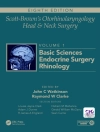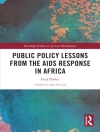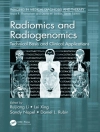The second edition of this book describes the clinical indications of NIV in patients hospitalized with high-risk infections as well as in the prehospital management of mass casualty incidents, including chemical or biological disasters and pandemics. In recent decades, we have learned the impact that different pandemics and mass casualty disasters can outcome in terms of health resource use, health costs and human lives. The development of respiratory failure in these patients, either infectious or non-infectious causes, has led to develop employment plans related both to invasive or noninvasive mechanical ventilation during acute respiratory failure.
In this book authors evaluate a rational basis for indications, specific noninvasive mechanical ventilation indications in hospitalized patients (tuberculosis, bacterial, virus, etc.) and prehospital applications (mass casualty: chemical, biological disaster), equipment (ventilators, interfaces) and plan organization for health systems: how and when apply NIV. A critical review of already published studies is described as well as implications and how will be the future according to international expert opinions.
Therefore, this updated edition represents a useful scientific reference point according to what it has been experienced in the last pandemics, with respect to the growing role that NIV has and must have in the world.
Tabela de Conteúdo
PART I. NIV and ARF: Transmission, Physiopathology, Equipment and Technology.- Mechanical ventilation and history in pandemics.- Pre-hospital ARF.- Hospital Organizations.- Transmission of severe acute respiratory syndrome during intubation and mechanical ventilation.- Rationale of Acute Respiratory Failure treatments in high risk infections.- Rationale of ARF approach in mass causalities.- Pathophysiology-High risk infections.- Nasal high flow oxygen equipment.- CPAP systems.- What Interface?.- NIV via different face masks / Helmets.- Humidification and aerosol therapy.- Models to assess air and particle dispersion.- Droplet dispersion during noninvasive oxygen therapy, nebulizer treatment and chest physic.- Part II. Summary of Clinical Experience, Guidelines, Protocols and Outcome.- NIV in Severe Acute Respiratory Syndrome (SARS).- NIV in avian flu.- NIV in H1N1.- NIV support in coronavirus (COVID-19).- NIV in Acute Immunodeficiency Diseases.- NIV in Legionella pneumophila.- NIV in Tuberculosis.- NIV transplants and immunocompromised.- Nasal high flow in high risk pediatric neonatology.- Nasal high flow in high risk pediatric infections.- Guidelines and protocol.- Prognostic factors in high risk infections.- Part III. Strategies to Control Infections in Hospitals.- Negative pressure rooms or well ventilated rooms.- Bacterial and viral filters to the expiratory circuit.- Personal protection equipment for health care workers.- Part IV. Failure Noninvasive Ventilator Approach.- Failure nasal high flow oxygen in high risk infections.- NIV-Reports of national surveys in epidemic- and pandemic.- Failure of noninvasive ventilator approach in high risk infections. Key determinants.- Endotracheal intubation in high risk infections.- Airway management in failure noninvasive ventilation in high risk infections.- Radiology findings in acute respiratory failure in common high risk infections.- Part V. Procedures in NIV Approach. Guidelines, Recommendations and its Effectiveness in ARF Treatment.- Bronchoscopy and non- invasive ventilation in high risk infections.- Summary of effectiveness of NIV in the treatment of acute respiratory failure.- Part VI. NIV in the Treatment of ARF: Biological and Non-biological Mass Causalities.- Hospital Bioterrorism Response. Programs.- Influenza and other airborne infections.- Massive intoxications.- NIV in Politrauma.- Burn.- Chemical disasters.- PART VII. Outcome, Ethics, Palliative and Do Not Endotracheal Intubation.- Health Organizations guidelines.- Outcome noninvasive ventilator approach in high risk infections.- Ethical dilemmas and do not endotracheal intubation orders.- PART VIII. Future Research About NIV Approach in High Risk Infections, Mass Casualties and Pandemics.- Lessons for lasts pandemics and for the future.
Sobre o autor
Antonio M. Esquinas is critical care specialist and staff physician in the Intensive Care Unit at the Hospital Morales Meseguer, Murcia. Spain. He is an International fellow of the American Association Respiratory Care (AARC), fellow of the American College Chest Physicians. (ACCP) European Respiratory Society, and Director of the International School of Non Invasive Ventilation, International noninvasive ventilation Fellowship program, president of the International Association of Non Invasive Ventilation and International College of Expert of noninvasive ventilation. His main educational and research activities are related to noninvasive mechanical ventilation in pulmonary, critical care and sleep medicine. Currently, he is very keen in difficult weaning, postextubation, respiratory, humidification and airway clearance techniques in mechanically ventilated patients. He is author of more than 60 books and 560 indexed papers in noninvasive ventilation approaches.












